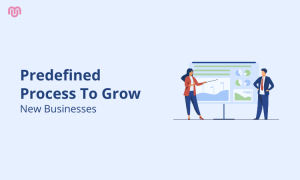A Property Management System (PMS) can significantly simplify and streamline the process of handling payments for both tenants and property managers in the long-term. Here's how a PMS makes payment management easier and more efficient over time:
1. Automated Rent Collection
A PMS can automate the rent collection process, ensuring that payments are collected on time without the need for manual reminders or interventions. Tenants can set up recurring payments directly through the system, making it convenient for them to pay rent each month without having to think about it. This reduces late payments and the administrative burden on property managers, ensuring a smooth flow of income.
2. Secure and Flexible Payment Methods
A modern PMS offers tenants various secure payment options such as credit cards, debit cards, bank transfers, and sometimes even digital wallets or ACH transfers. This flexibility accommodates tenants' preferred methods of payment, making it easier for them to pay promptly. Over time, as tenants become accustomed to these options, payments become more streamlined, further reducing friction in the payment process.
3. Real-Time Payment Tracking
With a PMS, property managers can instantly track all rent payments and monitor payment histories. This real-time tracking allows managers to see when a payment has been made, whether it was successful, and whether any outstanding payments are due. For tenants, they can also access their payment history at any time, ensuring transparency and reducing disputes about payment status.
4. Automated Payment Reminders
A PMS automatically sends payment reminders to tenants before the rent due date, reducing the chances of missed or late payments. These reminders can be customized to suit the communication preferences of tenants (email, text, app notification). Over time, tenants become accustomed to receiving these reminders, making it easier for them to stay on top of their payment obligations.
5. Late Fee Management
If a tenant misses a payment or is late, a PMS can automatically calculate and apply late fees based on pre-set rules. The system can notify tenants about the fee and keep track of any outstanding amounts. This ensures consistency and fairness in applying penalties, preventing human error and reducing the need for manual enforcement.
6. Payment Reconciliation and Reporting
A PMS simplifies financial management by automatically reconciling payments with the ledger, ensuring that all payments are correctly recorded. Property managers can easily generate reports that show rental income, late payments, security deposit details, and any additional charges. This provides a clear financial overview without the need for manual calculations or spreadsheet management.
7. Reduced Cash Handling and Administrative Work
By moving payments to an online platform, PMS eliminates the need for cash handling, checks, or in-person transactions. This reduces the risk of human error, misplacing payments, or dealing with physical payment receipts. Over the long term, this shift to digital payments minimizes administrative workload and allows property managers to focus on more value-added tasks.
8. Customizable Payment Schedules
Property management systems allow tenants to choose payment schedules that work best for them, such as monthly, quarterly, or weekly payments. This flexibility can improve tenant satisfaction, leading to more reliable and timely payments in the long term. Tenants who may have difficulty paying rent in one lump sum can opt for more manageable installment plans, which can reduce late payments and improve cash flow for property managers.
9. Integration with Accounting and Tax Systems
Many PMS integrate with accounting software, making it easier for property managers to track all incoming and outgoing funds. This integration allows for seamless data transfer between the PMS and tax preparation tools, which can significantly streamline financial reporting and tax filing processes. Over time, this saves property managers considerable time and effort during tax season and ensures accuracy in their financial records.
10. Security and Compliance
PMS platforms typically adhere to high standards of security, offering encrypted payment systems that protect both tenant and landlord financial information. This reduces the risks associated with fraud or unauthorized transactions. As long-term payment processing is handled securely and efficiently, both tenants and property managers can trust the system to protect their data over time.
11. Tenants Can Set Up Payment Plans
For tenants who may experience financial hardship, many PMS platforms allow for the creation of customized payment plans. These plans break down rent payments into manageable installments or give tenants the option to defer payment. Over time, this feature helps improve tenant retention and satisfaction while ensuring the property manager receives the payments they're owed.
12. Improved Cash Flow Management
Consistent, timely rent collection via PMS helps property managers manage their cash flow more effectively. The automation of payments ensures predictable revenue streams, which helps property managers plan for operating expenses, property maintenance, and other financial obligations. With all payments tracked and recorded automatically, managers can better forecast financial performance and make informed decisions.
13. Enhanced Transparency and Reduced Disputes
With detailed payment histories accessible through the PMS, tenants and property managers can easily resolve any payment-related disputes. Tenants can see when payments were made, and property managers can verify receipts without having to search through paper records. This transparency ensures trust between both parties and helps resolve issues quickly.
Conclusion
By automating rent collection, offering flexible payment options, reducing late fees, and providing real-time tracking and reconciliation, a Property Management System (PMS) helps make the payment process seamless and efficient in the long term. Both tenants and property managers benefit from enhanced transparency, fewer administrative tasks, and improved cash flow management. Over time, this results in more reliable payments, fewer disputes, and a smoother experience for everyone involved.






